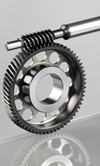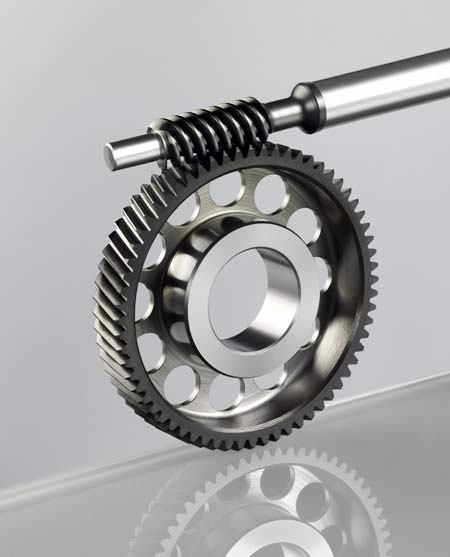DLC in transmission components
 In order to reduce stress and improve mechanical performance for any highly loaded powertrain component, surface finish is of the utmost performance; a superior surface improves fatigue resistance by removing potential stress raisers and the possibility of crack propagation. For geartrain components this is especially important, requiring high surface hardness to maintain impact strength and resist bending loads on the gear teeth, even though most of the gear material itself must exhibit enough ductility to reduce the risk of brittle failure under shock loading. Furthermore, any improvement in reducing parasitic drag is welcome. As previously mentioned in RET-Monitor, the Diamond-like Carbon (DLC) coating process has received much r&d attention in this respect, and rightly so.
In order to reduce stress and improve mechanical performance for any highly loaded powertrain component, surface finish is of the utmost performance; a superior surface improves fatigue resistance by removing potential stress raisers and the possibility of crack propagation. For geartrain components this is especially important, requiring high surface hardness to maintain impact strength and resist bending loads on the gear teeth, even though most of the gear material itself must exhibit enough ductility to reduce the risk of brittle failure under shock loading. Furthermore, any improvement in reducing parasitic drag is welcome. As previously mentioned in RET-Monitor, the Diamond-like Carbon (DLC) coating process has received much r&d attention in this respect, and rightly so.
Further to applications of surface coatings in other components, geartrain components are ones that can really use the benefits of DLC coatings, to give improved surface hardness and lower frictional losses. Ball-on-disc tests show that some DLC coatings give coefficient of friction values of as little as 0.05. Reports suggest that, in some cases, geartrain efficiency has been improved by up to 20%, owing to the lower frictional losses thanks to the coating's improved lubrication. The coating's properties enable this improvement by reducing the inclination of the lubricant adhering to the gear material.
These improvements in lubrication have helped to lower gearbox temperatures. There are improvements in other areas as well, including the resistance to scuffing, particularly during running-in periods. Further gains could be made within geartrain products due to additional use of such coatings to facilitate improved strength, allowing the use of lighter materials that, for example, aim to decrease rotational inertia.
Although there are a number of alternative coating processes, including titanium and chromium-based finishes, few offer the high hardness values or covering properties of a DLC coating. While exhibiting increased hardness properties over the substrate material, the coating also demonstrates a higher Young's modulus resulting in prohibitive compressive surface stresses, which in some cases can limit the overall film thickness applied to the material. Because of this it is common for surface treatments to be applied in a multi-stage process.

Even though material properties are improved, the coated components' surface finish is only as good as the surface to which it is applied. The component still needs the necessary finishing to the required specification for the coating to achieve the properties of which it is capable. Even though there is the benefit of improved surface hardness through the DLC process, the substrate material will still need heat treatment to ensure the correct depth of hardness values and to guarantee operational performance.
As can be seen from the applications of high-hardness surface coating treatments in transmission components, there are clearly performance benefits to be had at a cost - but there are also a number of design and manufacturing considerations to take into account as well.
Fig. 1 - Today DLC is used on all manner of geared components (Photo courtesy of Sulzer)
Written by Chris Thwaites